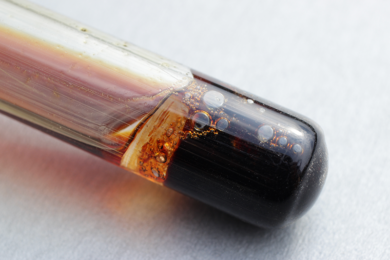Weba Chute Systems has successfully completed a chute upgrade project at Anglo American Platinum’s Mogalakwena North mine. The chutes were installed originally in 2006 and subsequently lined with ceramic tiles in 2013 in order to cope with the sticky fines material. “This project showcased the total solutions approach adopted by Weba Chute Systems in being able to respond to specific client problems and challenges,” Ted Cruickshank, Project Manager, says.
“At the beginning of 2014 we installed a temporary bypass leg on one chute in order to bypass the material onto a stockpile,” Cruickshank explains. Following this, Weba Chute Systems, under the auspices of Worley Parsons RSA, was awarded a contract to remove the temporary leg and place a permanent fixture on both chutes.
“Slight modifications had to be carried out to the existing chutes in order to incorporate the new legs, feeding the outgoing conveyors at various angles. Therefore this was quite a complex project that required a lot of time and ingenuity on the part of Weba Chute Systems in coming up with an appropriate solution,” Cruickshank says.
The incoming belt was a 1,050 mm conveyor with a speed of 2 m/s and a material bulk density of 2.6 t/m3. The maximum material size was 10 mm and a required tonnage of 600 t/h. However, a maximum tonnage of 1,000 t/h is possible with the solution provided by Weba Chute Systems.
Cruickshank explains that Weba Chute Systems’ upfront involvement in projects right from the design stage helps to mitigate many of the problems associated with transfer points. “Consulting with us during this vital phase means that we can bring the experience and expertise we have gained during thousands of installations to bear on an individual project,” he says. It also eliminates the situation where transfer points need to be redesigned after installation because certain critical factors have not been taken into account.
One of the most common problems associated with conventional chute design is where the product drops from any height directly onto the belt. “Such a basic design fault causes the most catastrophic damage and cost, as the impact of product falling directly onto the belt results in excessive wear and, in the worst-case scenario, can even result in tearing of the belt. In addition to the impact, excessive spillage also results in increased maintenance requirements. This has a direct bearing on both productivity and costs, due to unnecessary downtime and component replacement,” Cruickshank says.
The Weba Chute System is based on a ‘supertube’ or cascade effect that results from those occasions when material runs on material. This highly innovative approach to the dynamics of bulk materials handling results in significant cost savings for clients. It also showcases the considerable expertise and experience that allows Weba Chute Systems to be able to engineer solutions for specific client requirements.
The Weba Chutes feed material onto the screens at Mogalakwena North mine.









